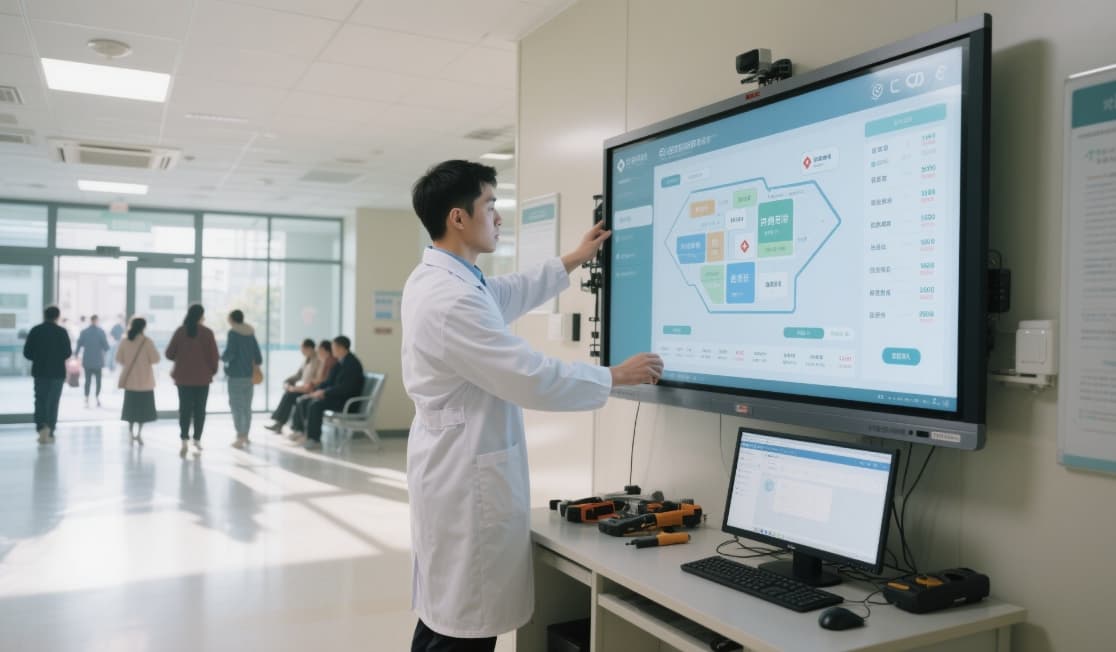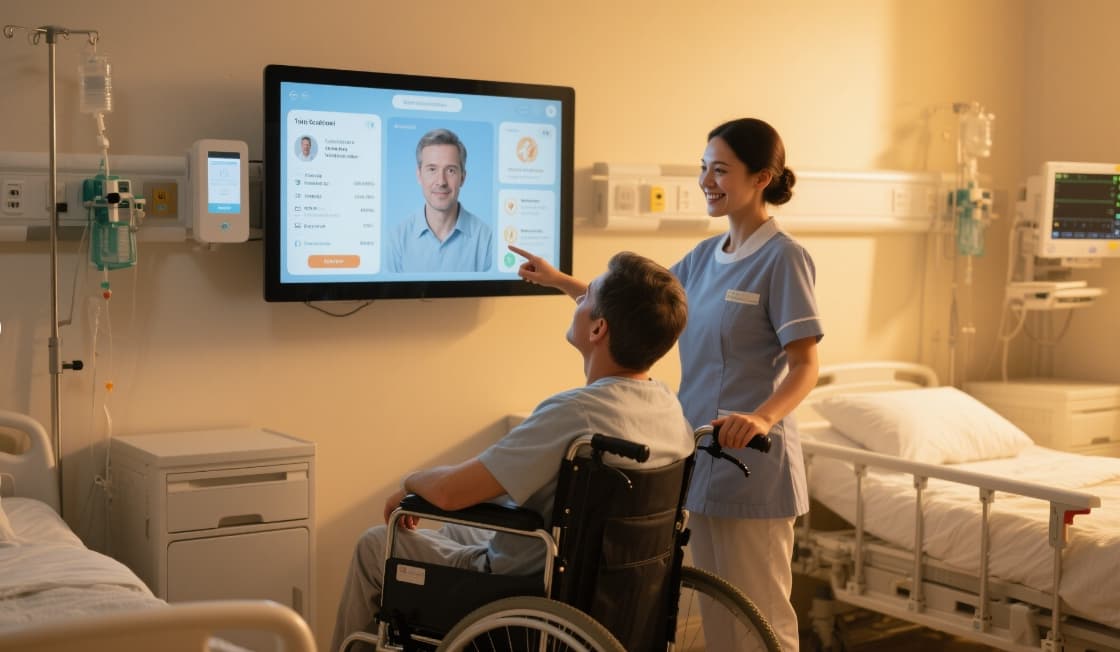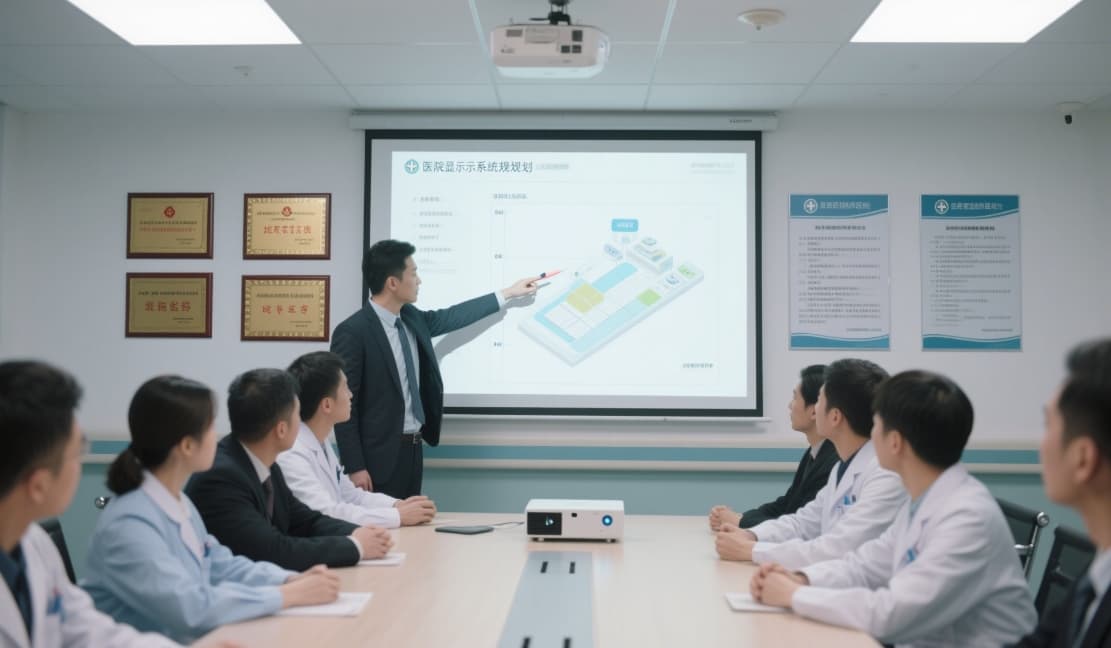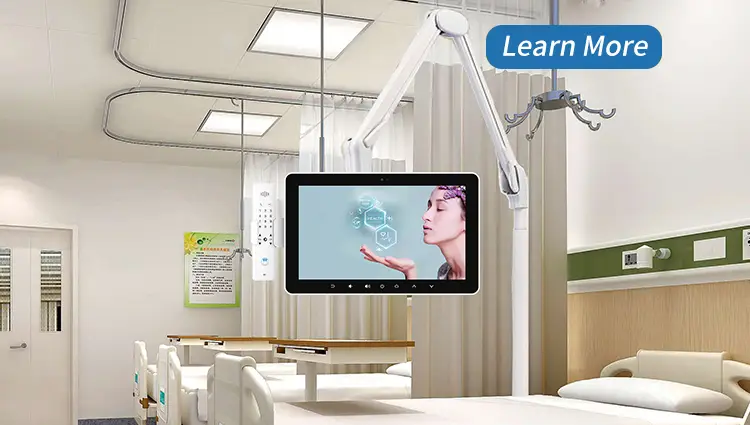Hospitals are high-stress environments where timely information and streamlined communication can mean the difference between chaos and calm. In recent years, digital transformation in the healthcare industry has given rise to one of the most practical and beneficial tools: hospital display systems. These systems are far more than flashy digital boards—they serve as the backbone of efficient information flow within medical facilities. But how do you implement one effectively?
Imagine walking into a hospital and instantly knowing where to go, how long you’ll wait, and when you’ll be seen—all thanks to a digital screen. Now imagine that screen not only helps patients but also staff by providing real-time data on room availability, patient status, emergency alerts, and more. That’s the power of a well-integrated hospital display system.

This article will walk you through everything you need to know about implementing such a system effectively—from understanding the tech and benefits to planning, deployment, and troubleshooting. Whether you’re managing a large metropolitan hospital or a small community clinic, you’ll gain insights that can help transform how your facility communicates.
Understanding Hospital Display Systems
A hospital display system is essentially a network of digital signage tools designed to relay real-time information to patients, visitors, and medical staff. These systems may include LED boards, LCD screens, touchscreen kiosks, and wall-mounted monitors that are strategically placed in waiting areas, lobbies, wards, and nurse stations.
Core Components of a Hospital Display System Include:
- Display Screens: The visible part of the system where information is presented.
- Content Management System (CMS): A backend platform that allows administrators to create, schedule, and manage content.
- Data Integration Tools: Connects the display system to hospital databases like EHR (Electronic Health Records), PACS (Picture Archiving and Communication System), and scheduling software.
- Network Infrastructure: Ensures stable connectivity across all displays in the hospital.
These display systems aren’t just static information boards. They’re dynamic tools that pull data from multiple sources and update in real-time. For instance, a patient’s queue number might be updated the moment a consultation room becomes available, or a screen outside the operating room might display surgical updates for concerned family members.
Hospitals can customize these systems based on their needs. For example, a maternity ward might use the system to display appointment schedules and baby-care tips, while an emergency department might show estimated wait times and triage levels. The flexibility of these systems makes them adaptable to virtually any department.

Benefits of Implementing a Hospital Display System
Investing in a hospital display system is not just about aesthetics or modernization—it’s about delivering tangible benefits that impact patient outcomes, operational flow, and staff productivity.
1. Enhancing Patient Experience:
Patients often arrive at hospitals stressed, confused, or unwell. Display systems can provide immediate clarity by showing:
- Queue numbers and waiting times
- Departmental directions (wayfinding)
- Educational and calming content (e.g., health tips, wellness videos)
This leads to reduced anxiety and improved satisfaction. When patients understand what to expect, their perception of care quality significantly improves.
2. Improving Operational Efficiency:
Display systems free up valuable staff time. Rather than answering repetitive questions about wait times or directions, hospital staff can focus on patient care. Real-time updates on patient flow, appointment changes, or emergency alerts ensure that everyone—from doctors to janitors—is on the same page.
3. Real-time Information Management:
Gone are the days of whiteboards and manual status updates. Display systems automate this process, ensuring that the information on-screen is accurate, current, and relevant. For example, digital operating room boards can show surgical schedules, procedure durations, and patient prep statuses without manual input.
Moreover, during critical situations such as code blues or fire drills, the system can push emergency messages instantly across all connected displays—saving precious seconds.
Planning the Implementation Process
Before jumping into installation, hospitals need a robust implementation strategy. Here’s what a well-thought-out planning phase should include:
1. Assessing Hospital Needs and Objectives:
Start by identifying the pain points your display system will address. Is your reception flooded with patients asking for directions? Are nurses spending too much time updating whiteboards? Set clear goals—be it reducing wait times, enhancing communication, or boosting patient engagement.
2. Budget Considerations and ROI Analysis:
Budgeting doesn’t mean going for the cheapest solution—it means balancing cost with long-term value. Take into account:
- Hardware costs (screens, mounts, kiosks)
- Software licensing and CMS subscriptions
- Installation and maintenance fees
Then, estimate the ROI by projecting benefits like reduced staffing hours, improved patient turnover, and higher satisfaction scores.
3. Stakeholder Involvement and Team Coordination:
Engage everyone—from IT and administrative staff to nurses and doctors. Their feedback will be invaluable in selecting functionalities that matter most. Create a project team that includes representatives from each department. Appoint a project manager to ensure milestones are met.
Remember, this isn’t just an IT upgrade; it’s a hospital-wide initiative. The more involved the staff are from the beginning, the smoother the implementation will be.

Choosing the Right Technology and Vendor
Choosing a hospital display system is like choosing a long-term business partner—you want reliability, compatibility, and support.
Features to Look For:
- Real-time integration with hospital systems (EHR, scheduling, PACS)
- Easy-to-use CMS for content updates
- Customization options for departments
- Emergency broadcast functionality
- Cloud-based or on-premises deployment flexibility
Comparing Vendors:
Shortlist vendors who specialize in healthcare environments. Request demos, case studies, and references. Evaluate their customer support, warranty policies, and scalability. Ask:
- How often is the system updated?
- Can it be integrated with our existing software?
- Is there multilingual support?
Integration Matters:
Your display system shouldn’t exist in a silo. Seamless integration ensures that your display content is always current and synchronized with hospital operations. This means less manual work and more trust in the displayed information.

